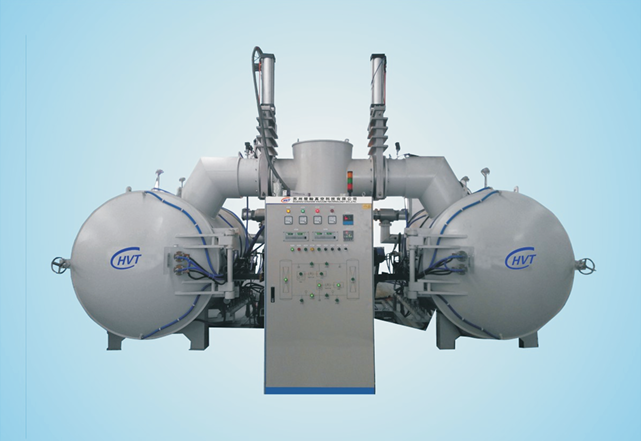Understanding Vacuum Furnace Technology for Industrial Applications
Selecting the ideal vacuum furnace for your specific manufacturing needs is a critical decision that can significantly impact your production efficiency, product quality, and operational costs. Modern vacuum furnaces represent a sophisticated blend of engineering excellence and precision control, offering unparalleled capabilities in heat treatment, brazing, and materials processing. Whether you're in aerospace, automotive, medical device manufacturing, or other high-precision industries, choosing the right vacuum furnace requires careful consideration of multiple factors.
Today's vacuum furnaces have evolved to meet increasingly demanding industrial requirements, offering exceptional temperature uniformity, superior cleanliness, and precise process control. These advanced thermal processing systems operate by heating materials in an environment with minimal atmospheric pressure, preventing oxidation and ensuring the highest quality results for critical applications.

Essential Components and Design Considerations
Hot Zone Configuration and Materials
The hot zone represents the heart of any vacuum furnace system. It consists of heating elements, insulation materials, and structural components designed to maintain precise temperature control while minimizing heat loss. Modern hot zones typically utilize advanced materials such as graphite, molybdenum, or tungsten, each offering specific advantages for different applications.
When evaluating hot zone configurations, consider factors such as maximum operating temperature, heating uniformity, and thermal efficiency. High-performance insulation materials and strategic heat shield placement help optimize energy consumption while ensuring consistent heat distribution throughout the work zone.
Pumping Systems and Vacuum Levels
The vacuum pumping system directly influences process quality and cycle times. A typical vacuum furnace employs multiple pump stages, including mechanical pumps, booster pumps, and diffusion or turbomolecular pumps. The selection of pumping technology depends on your required vacuum level, processing speed, and contamination control needs.
Consider the ultimate vacuum level needed for your application, as well as pump-down time requirements. Some processes may require only rough vacuum levels (10-2 torr), while others demand high vacuum (10-5 torr) or even ultra-high vacuum conditions for specialized applications.
Performance Specifications and Process Requirements
Temperature Capabilities and Control Systems
Modern vacuum furnaces offer sophisticated temperature control systems that ensure precise heating profiles and exceptional uniformity. Advanced PLC-based controls provide automated operation, data logging, and remote monitoring capabilities. Temperature uniformity typically ranges from ±3°C to ±5°C, depending on the specific design and application requirements.
When selecting temperature capabilities, consider not only your current needs but also potential future applications. Factor in heating and cooling rates, maximum operating temperature, and temperature uniformity requirements across your workload volume.
Size and Load Capacity Considerations
Workspace dimensions and load capacity directly impact your production capabilities. Vacuum furnaces are available in various sizes, from small laboratory units to large industrial systems capable of processing heavy loads. Consider both the physical dimensions of your typical workpieces and the total load weight when selecting furnace capacity.
Remember to account for future production needs and potential new product lines. Choosing a slightly larger capacity than current requirements can provide valuable flexibility for business growth and new opportunities.
Operational Efficiency and Cost Considerations
Energy Management and Utility Requirements
Vacuum furnaces represent significant energy consumers in any manufacturing facility. Modern designs incorporate various energy-saving features, such as advanced insulation systems, heat recuperation, and efficient heating element configurations. Understanding your facility's utility capabilities and energy costs is crucial for selecting the most cost-effective solution.
Consider features like water cooling requirements, power supply specifications, and auxiliary system needs. Some vacuum furnaces offer energy-saving modes and intelligent power management systems that can significantly reduce operating costs.
Maintenance Requirements and Service Support
Regular maintenance is essential for ensuring reliable vacuum furnace operation and maximizing equipment longevity. Different designs vary in their maintenance requirements and accessibility of critical components. Consider the availability of spare parts, service support, and preventive maintenance programs when selecting your equipment.
Look for features that simplify maintenance procedures and reduce downtime, such as easily accessible pump systems, replaceable heating elements, and modular component design. Manufacturer support capabilities, including remote diagnostics and local service availability, should also factor into your decision.
Safety Features and Compliance Standards
Safety Systems and Interlocks
Modern vacuum furnaces incorporate multiple safety features to protect operators and equipment. These include emergency shutdown systems, overpressure protection, cooling water flow monitoring, and various interlock mechanisms. Ensure that any system you consider meets or exceeds relevant safety standards for your industry and region.
Advanced monitoring systems provide real-time data on critical parameters and can automatically respond to potential safety issues before they become serious problems. This proactive approach to safety helps prevent equipment damage and ensures operator protection.
Industry Standards and Certification Requirements
Different industries have specific requirements for vacuum furnace certification and validation. Aerospace applications often require AMS 2750 compliance, while medical device manufacturing may have additional FDA-related requirements. Understanding and meeting these standards is crucial for maintaining quality certification and customer approval.
Consider whether your furnace supplier can provide necessary documentation and support for qualification procedures, including temperature uniformity surveys, instrument calibration, and process validation protocols.
Frequently Asked Questions
What factors most influence vacuum furnace pricing?
The cost of a vacuum furnace is primarily determined by its size, temperature capabilities, vacuum level specifications, and included features. Additional factors include control system sophistication, material handling automation, and safety features. Custom configurations and specialized materials can also significantly impact the final price.
How long does typical vacuum furnace installation take?
Installation time varies depending on furnace size and complexity but typically ranges from one to three weeks. This includes physical installation, utility connections, system testing, and initial operator training. More complex systems or those requiring special facility modifications may require additional time.
What are the typical maintenance intervals for vacuum furnaces?
Regular maintenance schedules depend on usage patterns and specific applications. Generally, daily visual inspections, weekly pump system checks, and monthly seal inspections are recommended. Major maintenance activities, such as heating element replacement or pump overhaul, typically occur annually or based on operating hours.


